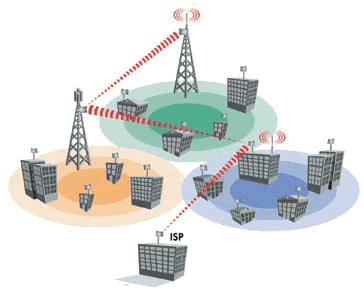
NSF Research at Carnegie Mellon — CNS-1218823
Machine Learning Based Algorithms for Quasi-Static Ad Hoc Wireless Networks

Project Description
------------------------------------------------------------------------------------------------------------------------------------------------------------------------------------------------------
Quasi-static wireless ad-hoc networks model important present and future applications such as city-wide mesh networks, machine-to-machine networks deployed for control (such as smart grid in power systems), and certain sensor networks. These types of networks are growing in importance; for example, the emerging field of cyber-physical systems envisions networked sensors and actuators to serve future intelligent applications, such as smart electricity grids, transportation grid control, infrastructure monitoring, etc. Since these types of applications require critical data delivery guarantees, the communication networks supporting them must be able to provide strong guarantees, much more than typically provided by mobile ad hoc networks (MANETs). However, due to the quasi-static nature (i.e., slowly changing topology) of these networks, quasi-static wireless networks have more stable characteristics than MANETs, hence, are better suited to provide strict rate and delay guarantees.
Despite the stable characteristics of quasi-static wireless ad-hoc networks, designing suitable algorithms for them is still challenging. Wireless communication suffers from problems such as fading, channel attenuation and co-channel interference. Algorithms must also control many parameters that interact in complex relationships, e.g., transmit power, link rates, scheduling, and routing. This large space of choices, compounded with the ad hoc deployment of devices, makes it difficult to accurately model the network, and thus difficult in designing optimal algorithms. This motivates the need to use tools from fields that are accustomed to dealing with complex stochastic and uncertain models; in particular, the field of machine learning. Machine learning methods are typically applied to large volumes of data where no good models are available from first principles. In contrast, there exists several reasonable first-order models in wireless networks (e.g., the inverse-square loss of radio signals), but these models may contain many unknown parameters (e.g., the transmit power and distances between devices). Hence, aspects of these first-order models will be retained, while the complexities arising from the large number of unknown parameters in these models will be handled by machine learning in a data-driven manner.
The proposed research envisions using statistical machine learning methods, based on sound information theoretic principles, to design efficient distributed algorithms for quasi-staic ad hoc wireless networks. Posing appropriate information theoretic problems on this model, and solving them using the tools of machine learning, will provide the desired network control protocols. Along the way, the notion of information sharing for distributed coordination will be quantified, and the value of various improvements, such as the use of side information and priorities, will be formally studied.